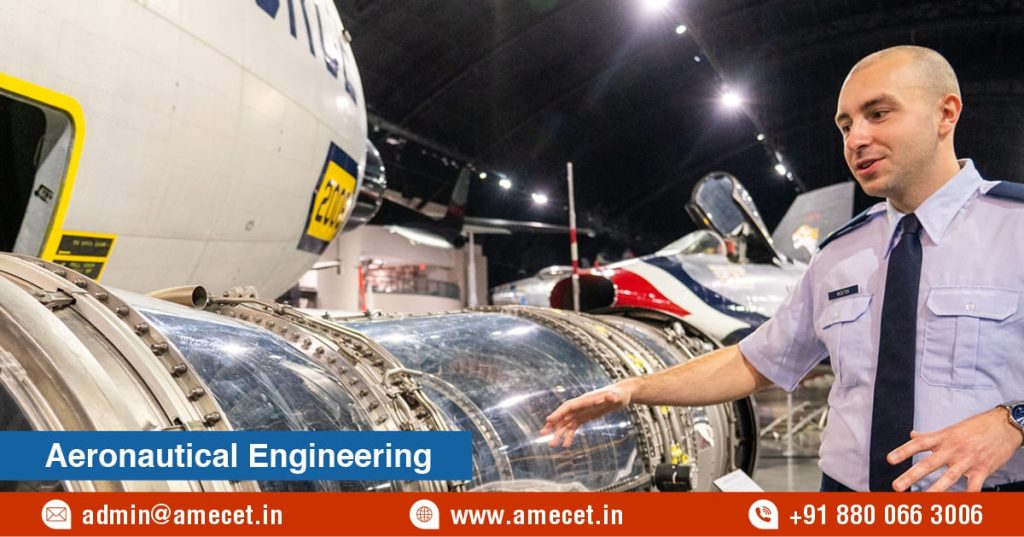Aeronautical Engineering is a branch of engineering that focuses on the design, development, testing, and production of aircraft and related systems. It involves the study of aerodynamics, materials science, structural analysis, propulsion, and avionics. Aeronautical engineers work on the creation and maintenance of airplanes, helicopters, and drones, ensuring they are safe, efficient, and capable of performing as required. This field combines advanced mathematics, physics, and engineering principles to innovate and improve aviation technology, making it essential for the advancement of air travel and the aerospace industry.
Historical Background
Aeronautical Engineering has evolved significantly since the early 20th century. Key milestones include the Wright brothers’ first powered flight in 1903, which marked the beginning of modern aviation. World Wars I and II spurred advancements in aircraft design and technology. The introduction of jet engines revolutionized air travel in the mid-20th century. Subsequent innovations, such as supersonic flight and advanced materials, have continually pushed the boundaries of aviation capabilities.
Historical Background:
- Early 20th Century: Origins of Aeronautical Engineering.
- Wright Brothers: First powered flight in 1903.
- World War I: Advancements in aircraft design.
- World War II: Significant technological developments.
- Jet Engines: Mid-20th-century revolution in air travel.
- Supersonic Flight: Breaking the sound barrier.
- Advanced Materials: Innovations in aircraft construction.
- Continuous Evolution: Ongoing advancements in the field.
Core Disciplines
Aeronautical Engineering encompasses several core disciplines essential for designing and maintaining aircraft. Aerodynamics focuses on the behavior of air as it interacts with aircraft surfaces. Materials science studies the properties of materials used in aviation. Structural analysis ensures the integrity and strength of aircraft structures. Propulsion systems examine engines and their efficiency. Avionics covers electronic systems and controls. Each discipline integrates to ensure safe, efficient, and innovative aircraft designs.
Core Disciplines:
- Aerodynamics: Study of air behavior and flow.
- Materials Science: Properties of aviation materials.
- Structural Analysis: Integrity and strength of structures.
- Propulsion Systems: Engine efficiency and design.
- Avionics: Electronic systems and controls.
- Flight Mechanics: Dynamics of aircraft motion.
- Control Systems: Stability and control of aircraft.
- Manufacturing Processes: Techniques for building aircraft.
Educational Pathway
Becoming an Aeronautical Engineer requires a structured educational pathway. Start with a high school diploma, focusing on mathematics and science subjects. Pursue a bachelor’s degree in Aeronautical or Aerospace Engineering, covering core engineering principles. Advanced studies, like a master’s degree, offer specialization. Internships provide practical experience. Certification from professional bodies, ongoing education, and research opportunities are essential for career advancement and staying updated with technological advancements.
Educational Pathway:
- High School Diploma: Focus on math and science.
- Bachelor’s Degree: Aeronautical or Aerospace Engineering.
- Core Engineering Principles: Fundamental courses.
- Advanced Studies: Master’s degree for specialization.
- Internships: Practical experience in the field.
- Certification: Professional body accreditation.
- Ongoing Education: Continuous learning and development.
- Research Opportunities: Engaging in innovative projects.
Key Skills and Competencies
Aeronautical Engineers require a blend of technical and soft skills. Proficiency in mathematics and physics is fundamental. Strong analytical and problem-solving abilities are essential for designing and troubleshooting aircraft systems. Attention to detail ensures precision in work. Effective communication and teamwork skills facilitate collaboration. Familiarity with computer-aided design (CAD) software is crucial. Continuous learning and adaptability to new technologies are also vital for success in this dynamic field.
Key Skills and Competencies:
- Mathematics and Physics: Fundamental technical knowledge.
- Analytical Abilities: Critical thinking and analysis.
- Problem-Solving: Effective troubleshooting.
- Attention to Detail: Precision in work.
- Communication Skills: Clear and effective communication.
- Teamwork: Collaborative skills.
- CAD Software: Proficiency in design tools.
- Continuous Learning: Adaptability to new technologies.
Tools and Technologies
Aeronautical Engineers utilize various tools and technologies to design and maintain aircraft. Computer-aided design (CAD) software aids in creating precise models. Computational fluid dynamics (CFD) software simulates aerodynamic properties. Wind tunnels are used for physical testing of models. Advanced materials like composites improve aircraft performance. Engine test rigs evaluate propulsion systems. Diagnostic tools ensure proper maintenance. Avionics systems control flight operations, and simulation software aids in pilot training and aircraft testing.
Tools and Technologies:
- CAD Software: For precise design modeling.
- CFD Software: Simulating aerodynamic properties.
- Wind Tunnels: Physical testing of models.
- Advanced Materials: Use of composites.
- Engine Test Rigs: Evaluating propulsion systems.
- Diagnostic Tools: Ensuring proper maintenance.
- Avionics Systems: Controlling flight operations.
- Simulation Software: Pilot training and aircraft testing.
In conclusion, Aeronautical Engineering is a dynamic and essential field that merges various disciplines to design, develop, and maintain aircraft. It requires a solid educational foundation, including a degree in Aeronautical or Aerospace Engineering, and proficiency in key technical and soft skills. Utilizing advanced tools and technologies, aeronautical engineers push the boundaries of aviation safety, efficiency, and innovation. The career offers diverse opportunities, from commercial aviation to space exploration, with continuous learning and adaptation being crucial for success. Aspiring engineers are encouraged to pursue this rewarding career, contributing to the advancement of air travel and aerospace technology.

